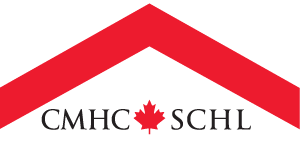The 2020 Q1 National Mortgage and Credit Trends data release is now available.
We’ve seen a continuation of trends from previous quarters, including:
- rising credit balances
- increasing share of higher value mortgages
Other indicators, such as the number of new mortgage loans as a share of new loans, saw an uptick, leading to a reversal in trend.
The data in this release is limited up until the end of March 31, 2020. It reflects a mainly pre-COVID-19 environment, before most policies, measures, and economic effects were in place.
Mortgage delinquency rates are steady
Delinquency rates are steady across Canada at 0.29%. Montreal continues to trend lower, below the national average. Toronto and Vancouver maintain a flat rate much lower than national average, at 0.11% and 0.13%, respectively.
Similarly, delinquency rates are relatively flat across most age cohorts. The exception is the 25 – 34 age group — usually young first time homebuyers. Their delinquency rates continue to trend lower to the lowest of any cohort, at 0.24%.
HELOCs and Lines of Credit delinquency rates continue to be relatively flat and low at 0.17% and 0.65% respectively. The rates for credit cards and auto loans both trended higher in Q1, at 1.7% for credit cards and 2.14% for autos.
Share of mortgages held with high credit score trends higher
The share of mortgages held by consumers with high credit scores (700+) continues to trend higher. It represents 86.23% of outstanding loans, as well as 85.52% of new mortgage loans. The number of mortgage loans outstanding continue to be held by decreasingly risky consumers.
Compared to the previous year, 29.2% of mortgage holders increased their credit score. Only 26.5% of their non-mortgage holding counterparts saw their score move higher.
The average Bankruptcy Navigator Index (BNI) score measures the probability of a consumer declaring bankruptcy in the next 24 months. This score ticked higher to 928 in Q1 for mortgage holders after remaining flat for the previous 4 quarters.
New mortgage originations continue to show an increasing share of mortgage debt in higher value segments (400,000-600,000 and 600,000+). The 300,000-400,000 segment is flat at 19.36%. The remaining segments continue to lose share. Combined, mortgages originated at values of over 400,000 now represent 38.6% of all new mortgages, compared to 35.9% in 2019 Q1 and 33.62% in 2018 Q1. This is likely to be due to rising home prices, as well as higher loans compared to home values.
Average outstanding loan balances as well as newly originated loans continue to trend higher in Q1. Newly originated mortgages reaching an average of $287,000.
As a share of total mortgage loans, new mortgages also increased in both number and outstanding balance. This is a reversal in trend compared to 2019 Q1 and indicates rising balances in new mortgages.
- The share of number of new mortgage loans increased by 0.8% compared to the same time last year.
- The share of the outstanding balance of new mortgages increased by 1.21%.
For other types of credit, 2020 Q1 showed a decrease in growth in LOCs, HELOCs, credit cards, and auto loans. While credit cards and auto loan balances are still growing, the growth rate is less than half compared to the same period in 2019. The percentage of credit card limit use for mortgage holders has also continued to trend lower to a 5-year low at 36.87%.
Average monthly mortgage obligations continue to trend higher, reaching $1338.80, compared to $1298.80 in Q1 2019. This trend is in line with the increases in both outstanding balances as well as larger origination sizes. Average line of credit obligations are flat at $155.70. Meanwhile credit card obligations inch higher from $80.88 in Q1 2019 to $85.85 in Q1 2020, continuing a steady increase since 2018.
For mortgage holders, the second highest monthly credit obligation are auto loans, at $516.99 in Q1 2020, compared to $511.77 in the same period last year. Auto loan obligations have trended upward for the past 5 years. HELOC obligations also increased in the past year by 2% to $462.60 compared to Q1 2019.
Non-mortgage holders maintaining their credit score
A lower share of non-mortgage holders improved their credit score compared to mortgage holders year over year. However, the difference resulted in a larger share of non-mortgage holders that maintained their credit score.
In other types of credit, delinquency rates for non-mortgage holders are significantly higher in auto loan and credit cards. Compared to those with mortgages, non-mortgage holders are more than 6 times more likely to be delinquent on their auto loans. Credit card loans are more than 2 times more likely to be delinquent. Delinquency rates for both auto loans and credit cards grew by 16% and 8% respectively, year over year for non-mortgage holders.
The average BNI score for non-mortgage holding consumers has trended lower since Q1 2019, but recently ticked higher to 913 in Q1 2020.
Growth in outstanding credit balances were higher in all types of credit:
- Auto loans
- Credit card balances
- Line of credit
However, year over year, this growth is lower compared to 2019. Notably, for non-mortgage holders, the growth rate for line of credit and credit card balances decreased 1.1% and 1.3% respectively. Auto loan balance growth decreased more, by 3.3%.
Credit card limit use was 38.49% for non-mortgage holders. Growth in credit card balances has decreased from 4.67% in 2019 Q1 to 3.37% in 2020.
HELOCs were the highest average monthly obligations for non-mortgage holders, at $631.69. Like their mortgage holding counterparts, monthly obligations for HELOCs has also been growing since 2018. There has been a 3.6% year over year increase, compared to Q1 2019.
Line of credit obligations also trended higher, with a year over year growth of 3.5% to $250.32. Auto loan obligations for this group are slightly lower at $476.42 compared to the Q1 2019, with an overall flat trend.
Get this information in a spreadsheet format.






 Share via Email
Share via Email
